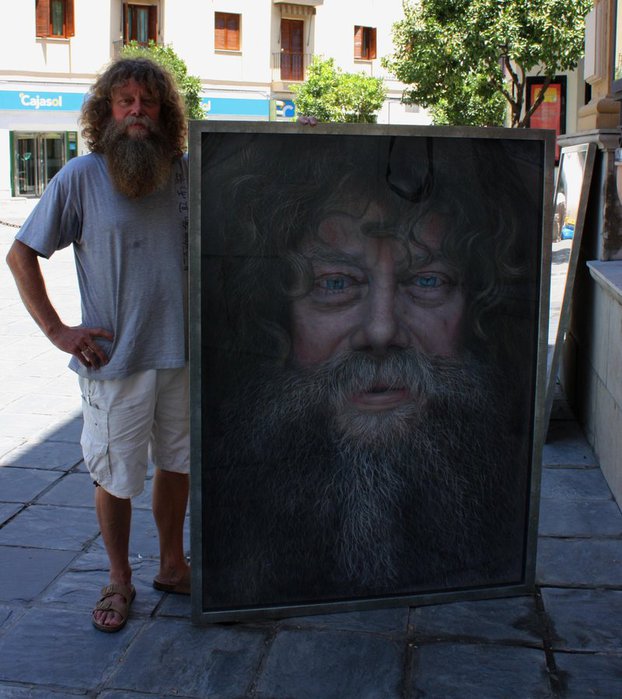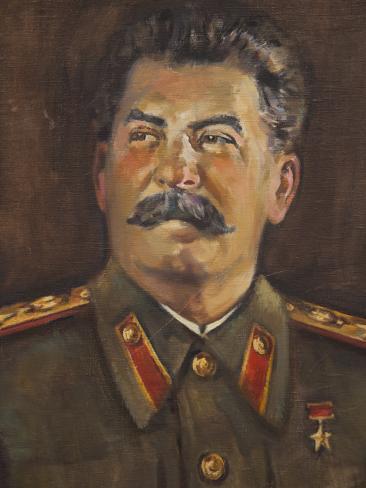Yves Klein was a French artist considered to be an important figure in post-war European art. Klein was a pioneer in the development of Performance Art, in his later career, as well as an inspiration to and a forerunner of both Minimal Art and Pop Art. He was also the leading member of the 1960's French art movement,
Nouveau realisme. Klein is said to have been influenced by his readings of
Max Heindel's The Rosicrucian Cosmo-Conception or Mystic Christianity, which taught that 'space equals spirit and life, that matter is inert form, [and] that sponges and water symbolize the saturation of matter with spirit.' At the age of nineteen, Klein and his friends lay on a beach in the south of France, and divided the world between themselves; Yves chose the ethereal space surrounding the planet, which he then proceeded to sign, critic Hannah Weitemeier comments:
"With this famous symbolic gesture of signing the sky, Klein had foreseen, as in a reverie, the thrust of his art from that time onwards—a quest to reach the far side of the infinite."
Klein's first public showing as an artist was when he published
Yves: Peintures in November of 1954. The book has been called an early example of Post-modernism. Parodying a traditional catalogue, it was composed of a series of intenses monochromes that were linked to various cities Klein had lived in. Art critic Sidra Stitch has called it
"a homogenous continuum with no real beginning, middle, or end, and no content" going on to say that instead of being an art booklet "[
Yves:Peintures] is made into a work of art that shares the same spirit of nothingness exemplified by the monochrome paintings that it features." Following the publication of his booklet, Klein had his first two public shows in 1955 and 1956. The public reception of these shows, which displayed a series of monochromes in varying colors, was deeply disappointing to Klein. To Klein each monochrome and each color had a powerful meaning behind them:
“I thus seek to individualize color for I have reached the conclusion that each color expresses a living world, and I express these worlds in my paintings. […] There are nuances that are gentle, mad, violent, majestic, vulgar, calm, etc. In short, each color nuance is clearly a “presence,” a living being, an active force that is born and that dies after living a sort of drama in the world of colors.”
Following this poor misunderstanding of his first shows Klein began working exclusively in blue monochromes. He crafted his own hue of blue, International Klein Blue (IKB), a color he considered had a quality close to pure space and he associated it with immaterial values beyond what can be seen or touched. Klein's next exhibition,
Epoca Blu, consisted of 11 identical blue monochromes painted with IKB-- effectively making his color an artwork, rather than just a component of it. The exhibition was a critical and commercial success and soon began touring. It's Parisian showing was advertised by postcards painted and sealed with IKB and the opening was marked by the release of 1001 blue balloons. Fellow artist
Piero Manzoni's work was deeply affected by
Epoca Blu, to which his
Achrome series (right) was a direct response to. Although Manzoni's
Achromes were influenced by other artists as well as Klein, it could be argued that Klein inadvertently started and thus should be credited with the creation of Manzoni's career; making any and all of Manzoni's commercial success a work of art that Klein could sign off as his own work. Neither artist was new to the concept; Manzoli would sign 'living sculptures' and
once claimed the world as his work, and as aforementioned Klein signed the sky. The two artists died a year apart and both of their deaths were signed by French artist
Ben Vautier as his work.
Sources:
http://www.newyorker.com/arts/critics/artworld/2010/06/28/100628craw_artworld_schjeldahl
http://www.tate.org.uk/art/artworks/klein-ikb-79-t01513/text-summary
http://en.wikipedia.org/wiki/Yves_Klein
http://en.wikipedia.org/wiki/Piero_Manzoni








.JPG)














 This reproduction from Donald Judd that resembles this crate design from Ikea just goes to show one way that Donald Judd has influenced our homes today.
This reproduction from Donald Judd that resembles this crate design from Ikea just goes to show one way that Donald Judd has influenced our homes today.  This crate design was made by Francis Cayouette to be sold in Ikea stores. It much resembles the above sculpture by Donald Judd in its minimalistic design.
This crate design was made by Francis Cayouette to be sold in Ikea stores. It much resembles the above sculpture by Donald Judd in its minimalistic design. 








.jpg)





